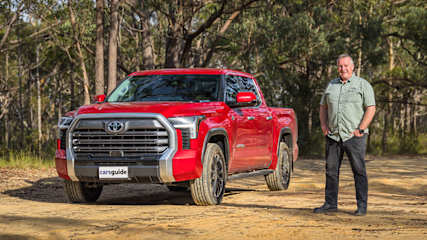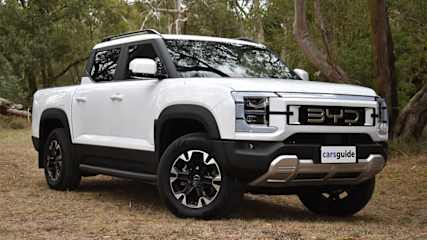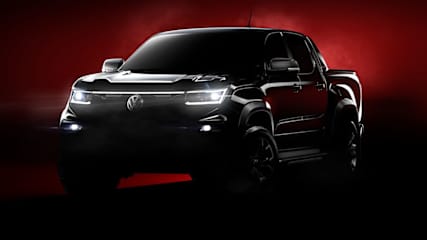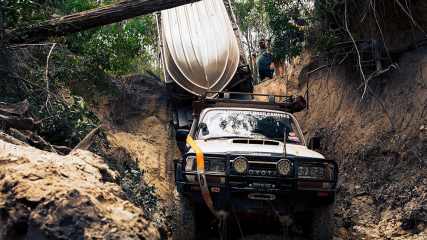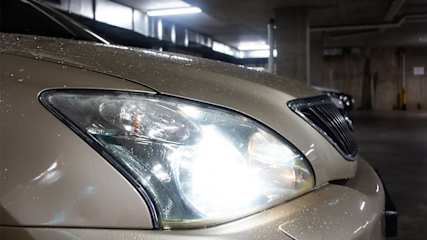Top 10 most common problems in used cars
By Marcus Craft · 07 Apr 2025
Sometimes a new car’s price puts it out of reach of a potential buyer, or that buyer is simply at a stage in their life where a second-hand vehicle is a better fit for them.What are used cars?A used car (aka a second-hand or pre-owned car) is simply a car that is not new. It has been previously used and owned and is then resold through a car dealership, via a private seller, or an online marketplace (such as Gumtree Cars).Do they tend to be more prone to problems?Not necessarily but, by their very nature, they have been used before, so they’ve been subjected to wear and tear, as well as the previous owner’s (or owners’) good or bad maintenance habits – and, of course, used cars are older than new cars.However, new cars may also trouble their owners with myriad common car problems and are even sometimes subject to recalls over faults or car issues that only come to light after that new vehicle has been on sale and out in the real world for some time.The good news is consistent maintenance, vehicle awareness and car troubleshooting should help you to prevent any common problems in used carsHere are 10 common problem areas in used cars and we’ll work our way from the tyres up.Note if the vehicle in question is an AWD or 4WD, chances are it has been put through a tremendous amount of stress and strain on tough terrain, so it deserves even closer scrutiny before you even think about purchasing it.Tyres are your vehicle’s first – and hopefully only – point of contact with the ground, so your tyres should be in great condition with plenty of tread depth, no cracks in the tyre’s surface, and no uneven wear and tear.What are the signs of this problem?When you notice uneven tyre wear, damage (cuts or splits) or, worse, changes in the car’s on-road dynamics while you’re driving, for instance steering pulling in one direction, or high-speed vibrations, it’s time to get your tyres checked out by a pro because tyre strife is no joke.How can you avoid this problem?Regularly check tyre condition for wear and tear, always run tyres at the manufacturer recommended pressure (refer to the tyre placard in the vehicle or the driver’s manual), and have the tyres rotated (about every 5000-8000km) and balanced, and the wheels correctly aligned. Also, replace tyres if they are 10 years old or more – a tyre’s date of manufacture is stamped on its sidewall.If the brakes on a car aren’t working properly, then the issue can range from mildly annoying (best-case scenario) to dangerous (worst-case scenario). Faulty/damaged/worn-out brake pads, rotors, or callipers may lead to poor braking efficacy (i.e. longer braking distances, brakes that are slow to bite etc) and so increase the risk of an accident, minor or otherwise.What are the signs of this problem?When you notice any unusual noises from the brakes when you do brake (such as high-pitched screeching), or obvious poor performance (i.e. longer braking distances, brakes are slow to bite or bite with a jerky on-off action etc) or even a brake warning light coming on. The culprit may be the brake pads, rotors or callipers.How can you avoid this problem?Unfortunately, this is one of the common car problems but it can be remedied with diligent maintenance. Undertake regular maintenance (according to guidelines in the vehicle owner’s manual) and regularly check the condition of all of your brake pads.If there are odd noises coming from the brakes, your best bet is to tackle the issue as soon as you aware of it – don’t let it become any worse than it already is.There’s no harm in having a look yourself but, by all means, get a pro to address the problem if you’re more comfortable with that.Have the brake pads and rotors checked and, if they’re too worn, get them replaced. While the mechanic is there, have them check for leaks, drain the brake fluid and replace, and, if needed, bleed the brake fluid.Any issue with the vehicle’s suspension is the next thing to watch out for and you’ll quickly recognise if there is something wrong because the car may ride and handle like a mechanical bull – well, not quite that bad but you get the idea.What are the signs of this problem?Suspension strife – worn-out or damaged shocks, struts etc. – will result in a choppy wayward ride and poor on-road handling with impacted steering.There may be noises coming from some part of your suspension set-up and your tyres may be wearing out unevenly and faster than they should.How can you avoid this problem?Regular maintenance, in accordance with guidelines in the owner’s manual, and being sure to check all suspension components, will hopefully pick up any potential issues before they become serious.When there is an issue, there’s no harm in having a look yourself but, by all means, get a pro to address the problem if you’re more comfortable with that.Have the shocks, struts and entire set-up scrutinised, and have any worn-out or damaged components replaced. If it’s an AWD or 4WD, it may have been punished in off-road situations and will need extra attention to avoid any issues down the track.The exhaust system gets rid of your car’s emissions and any problem with it quickly becomes obvious.What are the signs of this problem?Rust may be the culprit here, or loose exhaust pipes, or a leaking exhaust manifold (often indicated by a ticking or tapping noise in the engine, an illuminated ‘check engine’ icon, and a strong exhaust smell).Any strife with the exhaust system may result in poor fuel efficiency and – warn your neighbours! – a too-loud exhaust note.How can you avoid this problem?Regular maintenance, in accordance with the recommendations in the owner’s manual.Make sure you check all exhaust components when you’re scrutinising a car and hopefully that will pick up any potential issues before they become serious.To fix this problem, you’ll have to replace any rusted, damaged or broken parts, any loose sections of the exhaust will have to be tightened, and the leaking exhaust manifold will have to be sorted out.Any issues with your electrical system – lights, indicators, brake lights, power windows etc – should be addressed as soon as possible.What are the signs of this problem?Electrical problems may manifest as headlights (or other lights) that work only intermittently or not at all, power windows that don’t work properly, or interior lights that are faulty.A blown or faulty fuse, damaged or old wiring, or even a battery issue may be the cause of an electrical system malfunction.How can you avoid this problem?Regular maintenance, according to guidelines in the owner’s manual, will reduce the chances of minor issues becoming major issues.Conduct a full inspection of the electrical system (including wiring), replace any blown or faulty fuses, and check the battery and replace if required.A faulty cooling system could result in an overheating engine, which may become even more serious engine strife and lead to damage to – or even failure of – other components in your car.What are the signs of this problem?Some indications of a cooling system problem include that aforementioned overheating engine, the engine temperature gauge rising to a high level quickly, or an obvious coolant leak.Potential causes may include a split or clogged coolant hose, a leaking radiator, or a faulty water pump.How can you avoid this problem?Regular maintenance, according to guidelines in the owner’s manual, will reduce the chances of any minor issues becoming major issues. Pay attention: if the coolant system warning light/icon is illuminated on your dash driver display, then address the issue immediately – check coolant levels and the radiator and hoses.Potential fixes include flushing the cooling system, and replacing the radiator.Any strife in the fuel system – which consists of fuel filter, pump, injectors (or carburettor if the car is very old), and, of course, tank – means fuel delivery to the engine is compromised and, as a result, the car’s overall performance will suffer.What are the signs of this problem?If the car exhibits any of these signs – rough-as-guts idling, lacklustre acceleration, engine misfires, loss of power at high revs, and/or reduced fuel efficiency – then it’s a strong indication something is amiss in the fuel system.The cause? It could be anything from a clogged, old or even incorrect fuel filter, or pump; carbon deposits in the fuel delivery set-up, poor quality fuel (beware the dirty go-juice!) or something else.How can you avoid this problem? Regular maintenance, according to guidelines in the owner’s manual, will reduce the chances of any minor issues becoming major issues.Check fuel lines, and the fuel filter, pump and replace as necessary. Clean clogged injectors or get a pro to take a look if you want a second opinion and have those replaced if needed.Engine oil is a lubricant designed to reduce damaging friction created in the inner workings of an internal-combustion engine. Without enough clean engine oil, mechanical parts wear out faster than they would otherwise.An oil leak can signal a minor problem which has the potential to become a major problem if you don’t crash-tackle it at the source as soon as possible.What are the signs of this problem?Some indications that oil is leaking from the car: a puddle of oil on your driveway, low oil level, and/or engine overheating.Oil leaks may be caused by too-low oil levels, worn-out gaskets and seals, or faulty oil filters or other components.How can you avoid this problem?Regular maintenance is key. Pay attention to the condition of all oil-related components and fix leaks immediately to avoid minor issues becoming major issues.Always use the correct type of oil (read the owner’s manual) and replace any faulty parts as soon as possible.Get a professional to take a look if you want a second opinion.A fault in a manual transmission (a gearbox) or in an automatic transmission, if left unchecked, may result in costly repairs down the track so it’s best to address any transmission issues as soon as humanly possible.What are the signs of this problem?There may be clunking or grinding noises emanating from the gearbox or it may slip out of gear, strong burning smells (transmission is overheating, low fluid level), obvious leaks (worn-out seals or gaskets), and/or the ‘check engine’ light comes on.How can you avoid this problem?Regular maintenance, according to guidelines in the owner’s manual, will reduce the chances of any minor issues becoming major issues.Maintain correct transmission fluid level (refill or change as needed), check for transmission leaks and consult a mechanic if repairs or replacements parts are needed.Overview of this problem and what it entailsProblems with steering in a used car – or, for that matter, any car – is a serious safety issue.What are the signs of this problem?Steering strife is obvious from the get-go:Any trouble with turning the steering wheel (potential cause: power-steering fluid leak somewhere in the steering set-up)Vibrations through the steering wheel (potential cause: possible contaminant build-in the power-steering system)Steering pulls to one side (potential cause: worn-out steering gear, lack of power-steering fluid)Loose-feeling steering wheel (potential cause: worn-out steering rack, tie rod)Steering wheel slips when you turn it (potential cause: pump issue, worn-out steering rack mount, or worn or loose power-steering drive belt)Grinding noises when you turn the steering wheel (probable cause: steering gear problem)Screeching noise when you turn the steering wheel (possible cause: loose or worn-out power-steering drive belt or low power-steering fluid level)How can you avoid this problem?Conducting a bit of car troubleshooting and regular maintenance, according to guidelines in the owner’s manual, will reduce the chances of any common problems in used cars becoming major problems.Regularly check the power steering fluid level, steering pump, hoses and steering rack. Note if the power steering fluid is foaming or discoloured, there may be air or water in the system, so it’s not doing its job properly and should be replaced.






.jpg)

